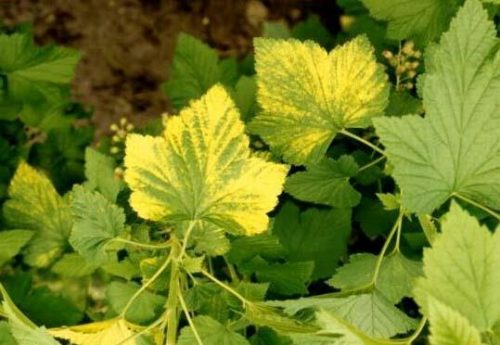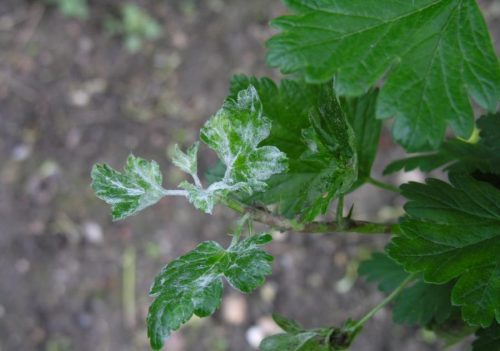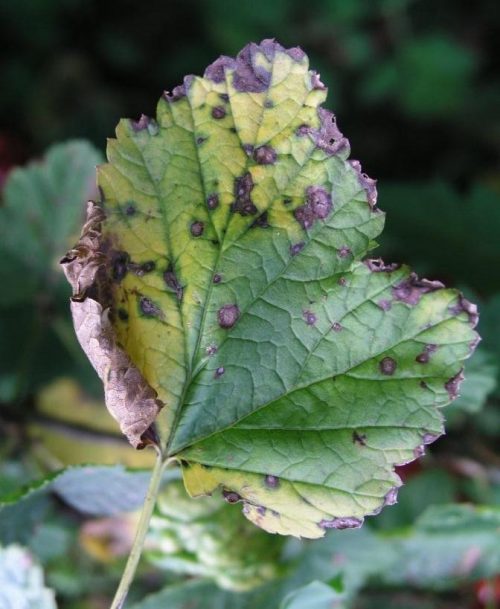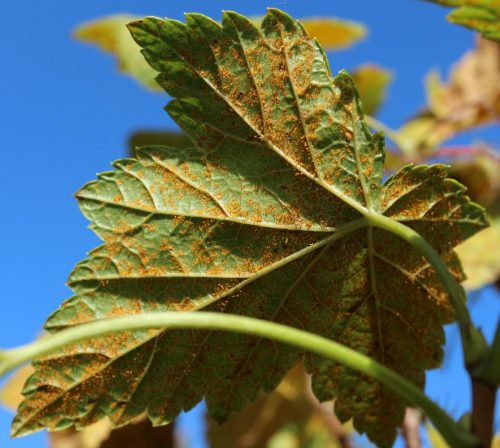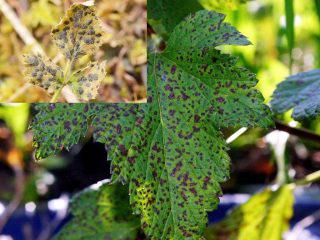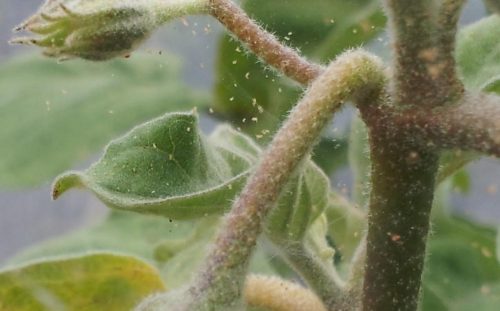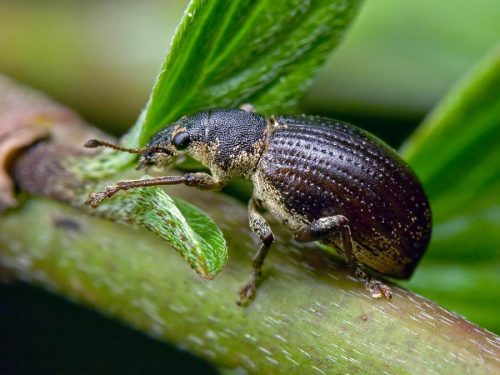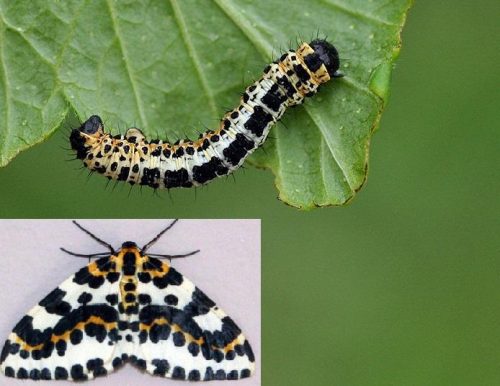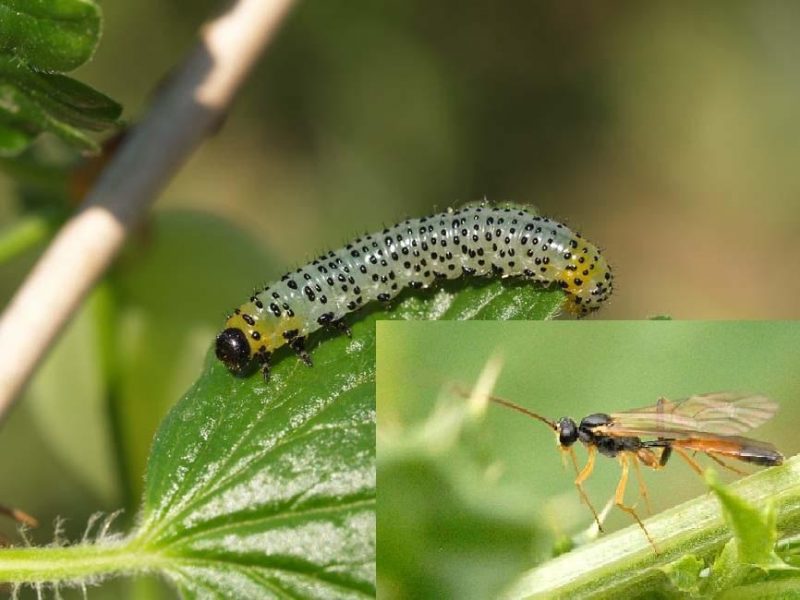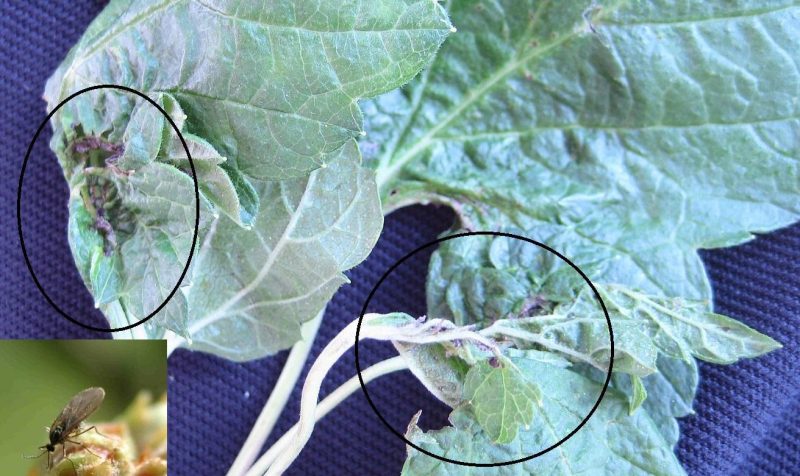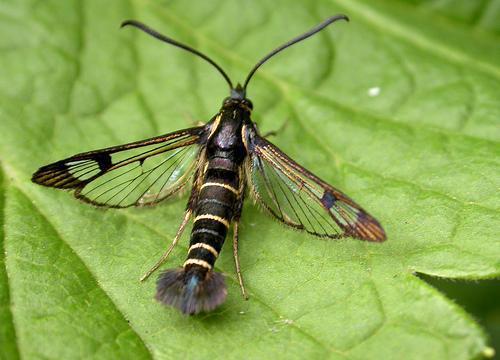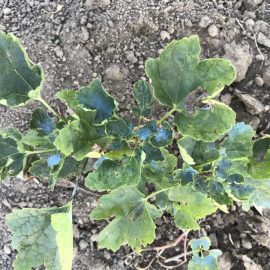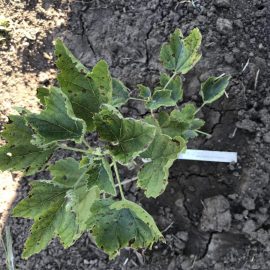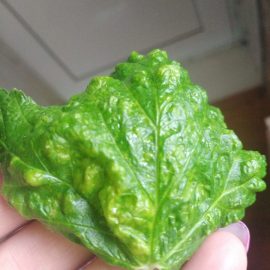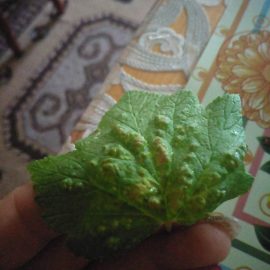Currant treatments, pest and disease control
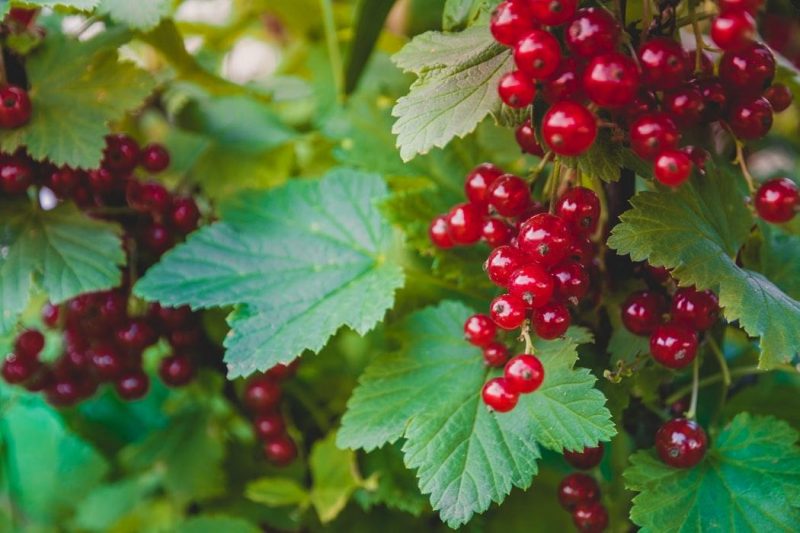
Blackcurrant (Ribes nigrum), redcurrant (Ribes rubrum), and snowy currant (Ribes niveum) are fruit-bearing shrubs that grow in the form of a bush. Each has high biological potential, capable of producing yields of up to 10 tons of fruit/ha. Currant shrubs have an erect growth, with 15-25 stems of different ages, 1-1.5 m high. In the soil, it develops a strongly branched root system, at a depth of 15-50 cm. The stems grow vigorously in the first years, then the growth intensity decreases. The flowers are clustered in raceme-like inflorescences and the fruit is a berry, which can reach a size of 2 cm. The shrub blooms in April-May, and the fruits ripen in July. Pollination is done by insects (entomophilous). Currants are an important source of nutrients, with a high content of sugars, organic acids, sodium, potassium, calcium, iron, dietary fiber, and vitamins (A, D, C, B6, B-12).
The main diseases of currant shrubs
VIRUSES
Blackcurrant yellows virus
Symptoms appear on the leaves which are positioned in the middle part of the branches. The leaves partially turn yellow and dry. In case of a severe attack, the leaf veins also turn yellow. The virus is transmitted by vegetative multiplication, through grafting, cuttings, or layering.
Prevention and control measures:
- disinfecting the tools (used for maintenance and cuttings, grafting, layering);
- using healthy genetic material.
MYCOSIS
Powdery mildew (Podosphaera mors-uvae and Microsphaera grossulariae)
Podosphaera mors-uvae is known as the American powdery mildew of currant, and Microsphaera grossulariae is the European powdery mildew of currant. These fungi attack young leaves, fruits, and shoots. A white mycelium appears on the surface of these organs. The attacked leaves remain small, dry, and eventually fall. White spots with a powdery aspect appear on the shoots, which turn brown. The young fruits shrivel up and turn black, while the ripe ones crack and rot.
Prevention and control measures:
- growing resistant varieties;
- removing and burning the attacked shoots;
- chemical treatments with specific fungicides.
Recommended products
-
You can find products on a different store
Change Store -
You can find products on a different store
Change Store -
You can find products on a different store
Change Store -
You can find products on a different store
Change Store -
You can find products on a different store
Change Store -
You can find products on a different store
Change Store -
You can find products on a different store
Change Store -
You can find products on a different store
Change Store -
You can find products on a different store
Change Store -
You can find products on a different store
Change Store -
You can find products on a different store
Change Store -
You can find products on a different store
Change Store -
You can find products on a different store
Change Store -
You can find products on a different store
Change Store -
You can find products on a different store
Change Store -
You can find products on a different store
Change Store -
You can find products on a different store
Change Store -
You can find products on a different store
Change Store -
You can find products on a different store
Change Store -
You can find products on a different store
Change Store -
You can find products on a different store
Change Store -
You can find products on a different store
Change Store -
You can find products on a different store
Change Store -
You can find products on a different store
Change Store
Anthracnose (Pseudopeziza ribis)
It is also known as the leaf spot of current, and it is the most dangerous disease that threatens currant plantations. The emergence of this disease is favored by the high atmospheric humidity. This fungus attacks mainly the leaves, but shoots, fruits, and flower stalks can also be affected. Small, circular, or irregular, reddish-brown spots appear on the attacked plant organs. The disease evolves, and the fungus fructification appears in the middle of the existing spots, as brown-rusty dots. The attacked leaves turn yellow, then brown, and fall prematurely. Thus, the capacity of photosynthesis is reduced, having negative effects on production.
Prevention and control measures:
- growing resistant varieties;
- removing and burning the attacked organs;
- chemical treatments with specific fungicides.
Recommended products
-
You can find products on a different store
Change Store -
You can find products on a different store
Change Store -
You can find products on a different store
Change Store -
You can find products on a different store
Change Store -
You can find products on a different store
Change Store -
You can find products on a different store
Change Store -
You can find products on a different store
Change Store -
You can find products on a different store
Change Store -
You can find products on a different store
Change Store -
You can find products on a different store
Change Store -
You can find products on a different store
Change Store -
You can find products on a different store
Change Store -
You can find products on a different store
Change Store -
You can find products on a different store
Change Store -
You can find products on a different store
Change Store -
You can find products on a different store
Change Store -
You can find products on a different store
Change Store -
You can find products on a different store
Change Store -
You can find products on a different store
Change Store -
You can find products on a different store
Change Store -
You can find products on a different store
Change Store -
You can find products on a different store
Change Store -
You can find products on a different store
Change Store -
You can find products on a different store
Change Store
Rust (Cronartium ribicola)
The attack is mainly on the leaves. Yellow discoloration spots appear on the upper side of the leaves, and on the lower side, the fungus forms circular brown pustules. The disease progresses and the fungus develops yellow spores on the underside of the leaves. Attacked leaves wither and fall off and the fruit does not ripen normally.
Prevention and control measures:
- growing resistant varieties;
- chemical treatments with specific fungicides.
Recommended products
-
You can find products on a different store
Change Store -
You can find products on a different store
Change Store -
You can find products on a different store
Change Store -
You can find products on a different store
Change Store -
You can find products on a different store
Change Store -
You can find products on a different store
Change Store -
You can find products on a different store
Change Store -
You can find products on a different store
Change Store -
You can find products on a different store
Change Store -
You can find products on a different store
Change Store -
You can find products on a different store
Change Store -
You can find products on a different store
Change Store -
You can find products on a different store
Change Store -
You can find products on a different store
Change Store -
You can find products on a different store
Change Store -
You can find products on a different store
Change Store -
You can find products on a different store
Change Store -
You can find products on a different store
Change Store -
You can find products on a different store
Change Store -
You can find products on a different store
Change Store -
You can find products on a different store
Change Store -
You can find products on a different store
Change Store -
You can find products on a different store
Change Store -
You can find products on a different store
Change Store
Currant leaf spot (Mycosphaerella ribis)
Small, circular, brown spots appear on the leaves. As the disease progresses, the spots become greyish, and black dots appear on their surface, representing the fungus fructifications. The disease is transmitted by spores, which overwinter on the fallen leaves, on the ground.
Prevention and control measures:
- growing resistant currant varieties;
- chemical treatments with specific fungicides.
The main pests of currant shrubs
Aphids
Are polyphagous species that migrate from one plant to another or from one species to another. They grow on wild flora and then move to cultivated species. They live as colonies on the underside of leaves, on flowers or inflorescences, and young shoots. The insects sting and suck the plant’s sap. The currant bushes show reduced growth, and the attacked leaves become deformed.
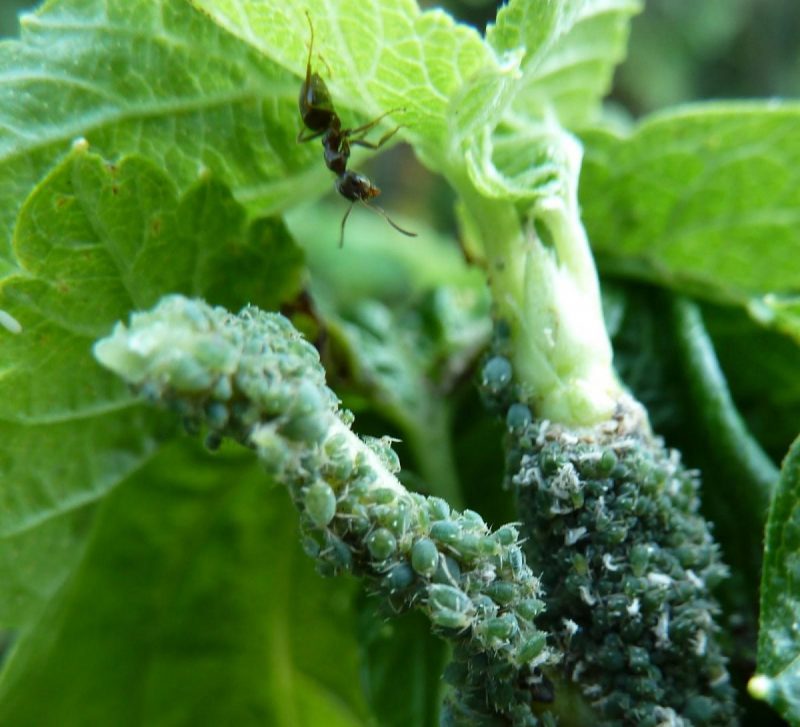
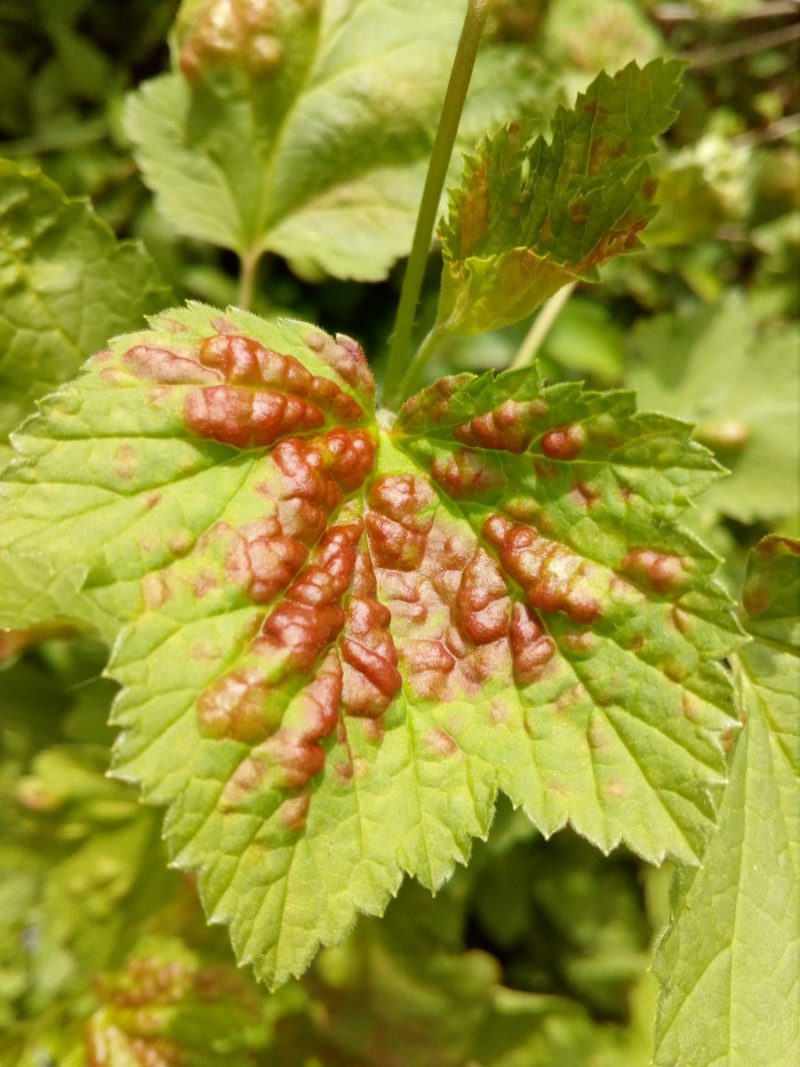
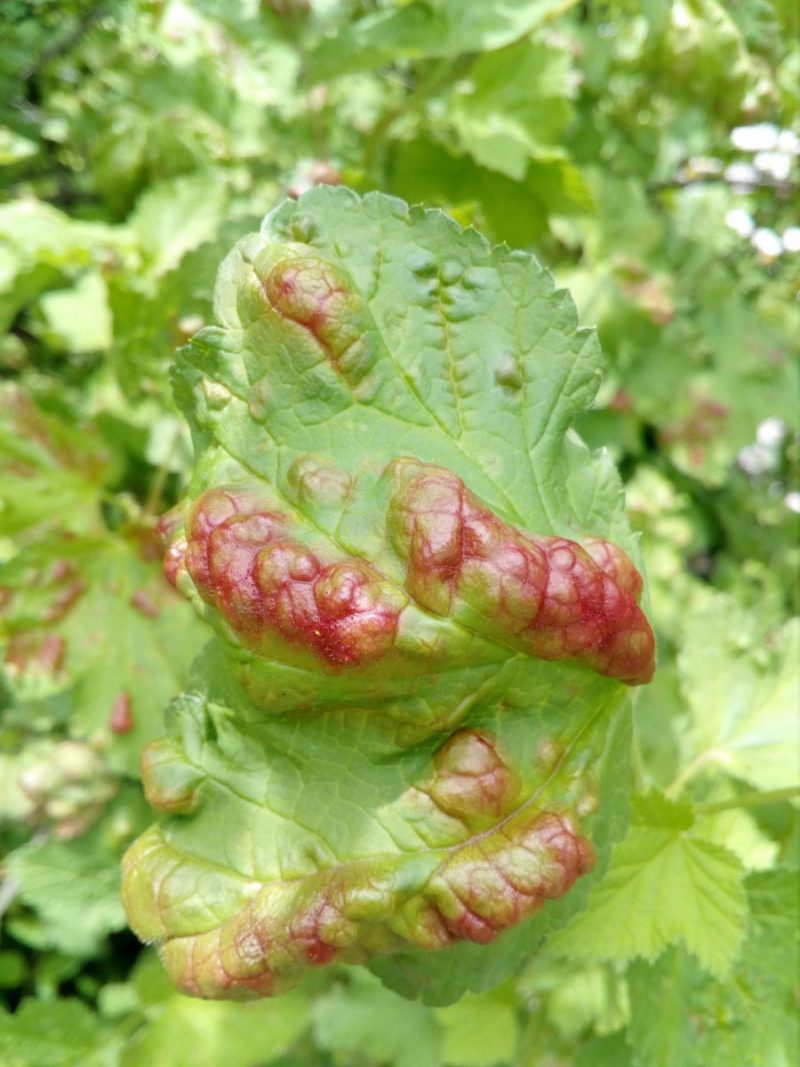
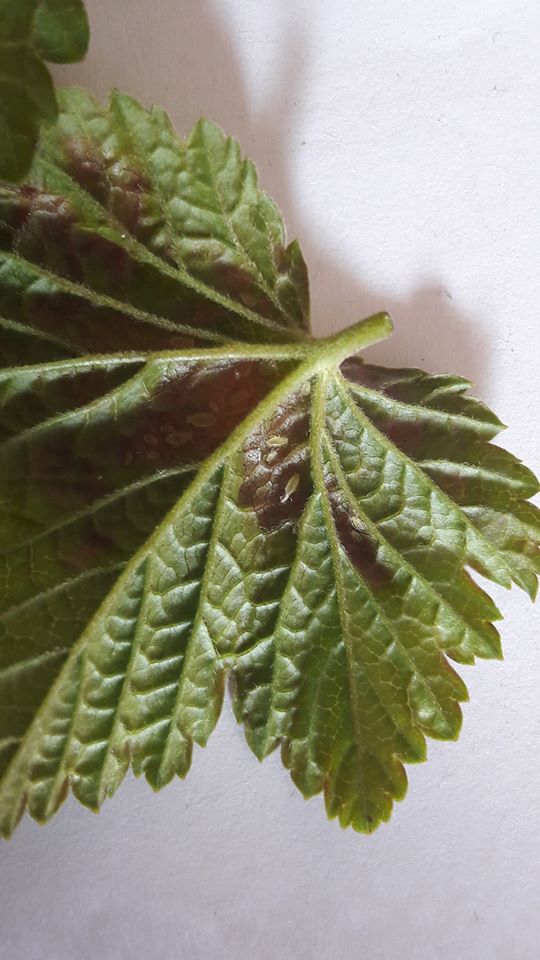
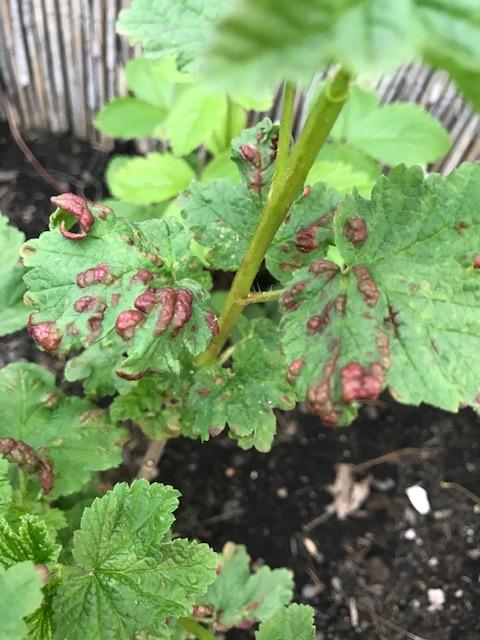
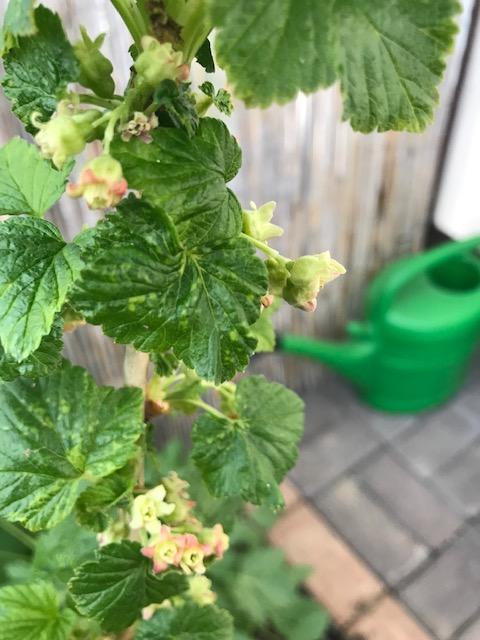
Control methods:
- chemical treatments with specific insecticides.
Mites
These pests are very difficult to see with the naked eye. They are polyphagous species, which attack many plants and fruit-bearing trees, both cultivated species, and spontaneous species. They feed on cell juice. Following the attack, the leaves have a parchment-like appearance, the flowers abort, and the currant shrub stagnates from growth.
Control methods:
- chemical treatments with specific insecticides.
San Jose scale (Quadraspidiotus perniciosus)
It is a polyphagous species that attacks over 200 plant species. It has 1-3 generations per year and overwinters in the lava stage on the bark of affected species. Females and larvae spread to all organs of affected plants, including the fruit, and feed on the sap of the host plants. In the event of a massive attack, the shields protecting the insect bodies overlap and suffocate the shrubs. They stagnate in growth, and after 2-3 years they wither.
Control methods:
- applying dormancy period treatments with horticultural oil-based products;
- chemical treatments with specific insecticides, during the vegetative growth period.
Sciaphobus squalidus
It is a dangerous species, attacking mainly buds and flower buds. It develops one generation every two years and overwinters as an adult in the topsoil. In spring the adults emerge and migrate to shrubs and feed on buds and flower buds. The larvae are not harmful, they feed on the roots of spontaneous herbaceous plants.
Control methods:
- mobilizing the soil in the plantation (autumn);
- chemical treatments with specific insecticides.
Common magpie moth (Abraxas grossulariata)
It is also known as the currant moth and it attacks European gooseberry and currant plants. It develops one generation a year and overwinters as a larva in silk nests, under fallen leaves. The main damage is caused by larvae, which feed on the leaves, causing defoliation and reduced production.
Control methods:
- chemical treatments with insecticides, applied at the first signs of the attack.
Recommended products
-
You can find products on a different store
Change Store -
You can find products on a different store
Change Store -
You can find products on a different store
Change Store -
You can find products on a different store
Change Store -
You can find products on a different store
Change Store -
You can find products on a different store
Change Store -
You can find products on a different store
Change Store -
You can find products on a different store
Change Store -
You can find products on a different store
Change Store -
You can find products on a different store
Change Store -
You can find products on a different store
Change Store -
You can find products on a different store
Change Store -
You can find products on a different store
Change Store -
You can find products on a different store
Change Store -
You can find products on a different store
Change Store -
You can find products on a different store
Change Store -
You can find products on a different store
Change Store -
You can find products on a different store
Change Store -
You can find products on a different store
Change Store -
You can find products on a different store
Change Store -
You can find products on a different store
Change Store -
You can find products on a different store
Change Store -
You can find products on a different store
Change Store -
You can find products on a different store
Change Store
Currant sawfly (Nematus ribesii)
It is also known as the currant worm or the common gooseberry sawfly. It develops two generations per year and overwinters in a cocoon in the topsoil. The larvae of the first generation bore holes in the leaves and later destroy the leaf blade. The attack occurs on leaves at the base of shrubs.
Control methods:
- chemical treatments with insecticides.
Black-currant leaf midge (Dasineura tetensi)
It is also known as the leaf-curling midge. The insect develops 3 generations per year and overwinters as a larva in the topsoil, in a silky cocoon. The attack is manifested on the young leaves at the top of the shoots. They curl, deform, and turn brown. It causes most damage in nurseries and young plantations.
Control methods:
- chemical treatments with specific fungicides;
Currant clearwing (Synanthedon tipuliformis)
It causes great damage in all blackcurrant plantations, especially in plant nurseries. The adult is a butterfly, similar to a wasp. Its larvae gnaw irregular galleries under the bark of the stems, where it overwinters. The damage is produced mostly by the larvae. The attacked plants have dry shoots and stems, and in case of a strong attack, the bush dries out. Fighting this pest is difficult.
Control methods:
- chemical treatments with insecticides when the adults appear in the plantation (May/April);
- chemical treatments with insecticides during the dormancy period.
Recommended products
-
You can find products on a different store
Change Store -
You can find products on a different store
Change Store -
You can find products on a different store
Change Store -
You can find products on a different store
Change Store -
You can find products on a different store
Change Store -
You can find products on a different store
Change Store -
You can find products on a different store
Change Store -
You can find products on a different store
Change Store -
You can find products on a different store
Change Store -
You can find products on a different store
Change Store -
You can find products on a different store
Change Store -
You can find products on a different store
Change Store -
You can find products on a different store
Change Store -
You can find products on a different store
Change Store -
You can find products on a different store
Change Store -
You can find products on a different store
Change Store -
You can find products on a different store
Change Store -
You can find products on a different store
Change Store -
You can find products on a different store
Change Store -
You can find products on a different store
Change Store -
You can find products on a different store
Change Store -
You can find products on a different store
Change Store -
You can find products on a different store
Change Store -
You can find products on a different store
Change Store














































































































































































































































































































































































































































